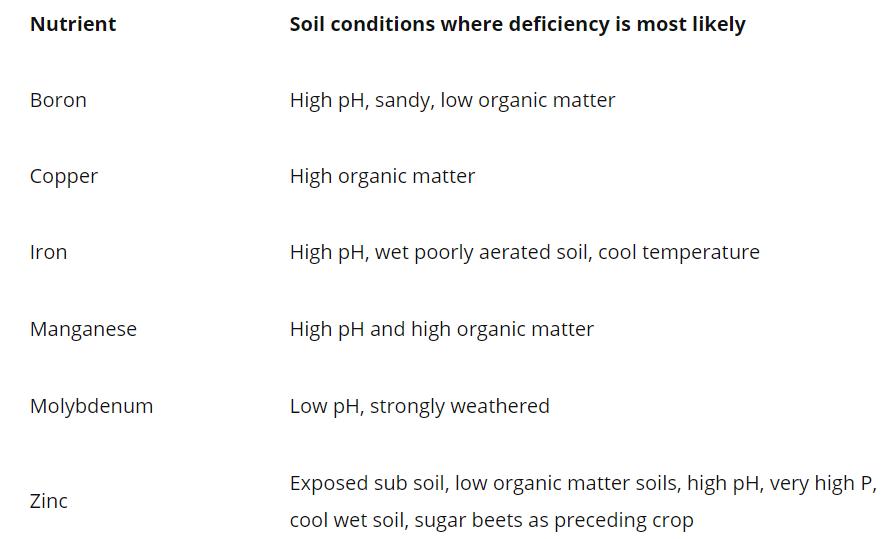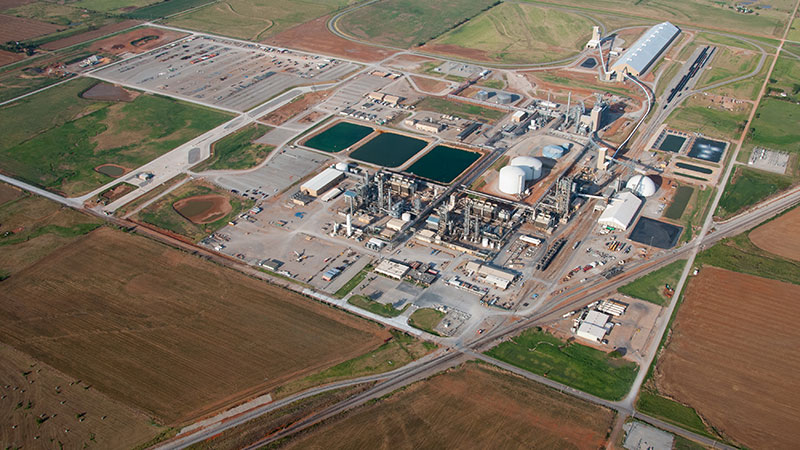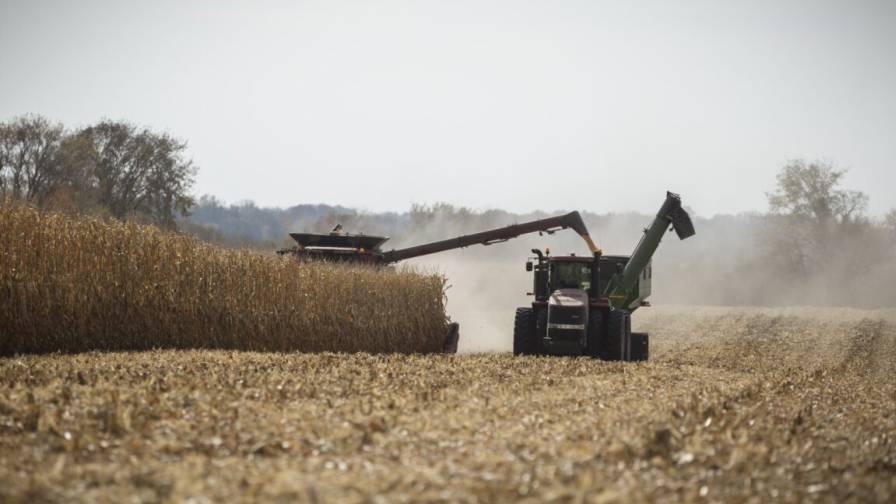4 Tips to Identify Micronutrient Deficiencies
According to a report by Markets and Markets the global agricultural micronutrients market is projected to reach a value of USD 5.4 billion by 2025. As growers continue to identify strategies to maximize yield potential, micronutrients will continue to play an important role, according to CHS Agronomy. But how do you help growers who may not know what to look for?
CHS Agronomy compiled a list of four tips to help identify conditions causing deficiency, what deficiency looks like in corn and soybeans, and the framework to apply micronutrients, if needed.
Know the Conditions Where Deficiency Is Likely
A variety of factors can contribute to deficiencies in soil. Everything from soil pH, to organic matter and temperature can all factor in. This chart outlines a variety of factors that can contribute to deficiencies in soil:

Source: CHS Agronomy
Know What Deficiency Looks Like
Zinc
Corn: symptoms of zinc deficiency are easiest to spot when corn is about knee-high. Yellowing, white stripes and growth stunting are all signs of a zinc deficiency, but they can often also be mistaken as iron or manganese deficiencies.
Soybeans: stunting stems in young plants with interveinal chlorosis on younger (upper) leaves and/or leaves becoming bronzed and dropping early are symptoms of Zn deficiency. Symptoms appear first or are more severe on older and/or fully expanded leaves, and are uniform across leaves.
Copper
Corn: young leaves are yellow as they come out of the whorl, and the tips may die. Leaves Become streaked – much as they do with an iron deficiency. The stalk is soft and limp. In severe cases, the leaf edges die in a pattern similar to potassium shortage
Soybeans: copper deficiency is rare in soybeans; it may be seen as interveinal chlorosis in the upper and medium height leaves.
Continue reading at CHS Agronomy.





